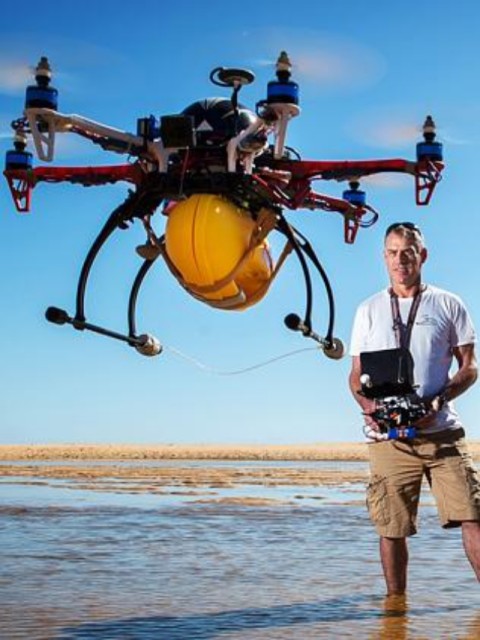 Lifesaving drones could rescue swimmers in distress in a hi-tech pitch to reduce drownings across Australia. Victorian paramedic Robin Lowe has developed a prototype that can hover and release a flotation device in less time than it takes a rescue crew to respond.
Lifesaving drones could rescue swimmers in distress in a hi-tech pitch to reduce drownings across Australia. Victorian paramedic Robin Lowe has developed a prototype that can hover and release a flotation device in less time than it takes a rescue crew to respond.
It means good Samaritans would no longer have to put their own lives at risk to help somebody in trouble.
Mr Lowe said a drone could mean the difference between life and death.
“My main motivation for this was just to show it was possible, that the technology is there now,” Mr Lowe said.
“The automation is getting better and better.”
In the same way cardiac defibrillators were now accessible in supermarkets, Mr Lowe said there was potential for drones to be available at popular beaches or dangerous surf spots.
Drones have drawn the ire of authorities in major cities worldwide for invading commercial airspace or creating privacy issues.
But Mr Lowe said the lifesaving concept showed the devices had a far more beneficial use. In some cases drones are being used to drop medical supplies in remote regions or help firefighters battle major blazes.
Fitted with a Stormy Australia flotation device, the 550 Hexicopter is just 55cm wide and after its modification, would cost around $2500.
“There is a certain level of automation that makes them safe, available and user-friendly,” Mr Lowe said.
Lifesaving Victoria operations manager Greg Scott said the drone was an option worth exploring.
“We are always looking for innovative ways to improve safety for beach-goers and, who knows, drones may well have a role to play in the future,” Mr Scott said.
Photo: Jake Nowakowski
Source: Herald Sun
